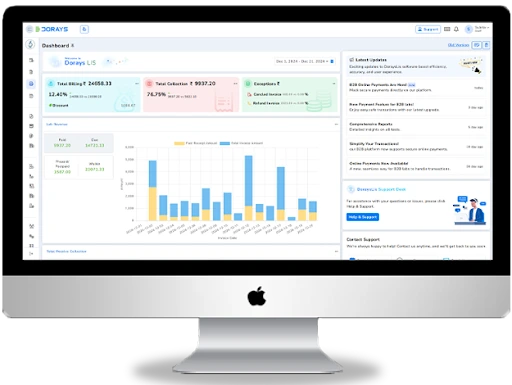Veterinary LIMS or Veterinary Laboratory Information Management Systems is a software intended to manage the workflows of a veterinary diagnostic laboratory such as sample tracking, data storage, and reporting. Unlike common LIMS applications used in clinics or industrial laboratories, Veterinary LIMS focuses on the specifications of veterinary practitioners, researchers, and diagnostic laboratories dealing with the animal kingdom.
The primary functions of a veterinary clinic or diagnostic center that receives test specimens, be it blood, urine, or even tissue biopsy samples, is to capture a range of compliance, speed, and accuracy. Veterinary LIMS works toward these objectives by supporting processes and eliminating manual errors throughout the entire digitally automated diagnostic lifecycle.
Why Veterinary Labs Need a LIMS
The management of animal health requires numerous tests to be performed, quick diagnoses to be made, and intensive interdepartmental coordination. Relying on the traditional approaches such as using spreadsheets, hand logs, or standalone instruments is bound to result in errors and delays. A veterinary LIMS, on the other hand, offers a consolidated tool which allows automation of sampling, test allocation, entry of biological and diagnostic results, and final report generation subjected to compliance checks.
A minor data entry mistake in veterinary laboratories can lead to a serious misdiagnosis. With a LIMS system implemented, tests are recorded in real-time, minimizing delays and enhancing treatment results. The system also enables barcode verifications, digital signing, and audit log creation further increasing efficiency and responsibility.
Improved Features of Veterinary LIMS
Sample Tracker : Monitor the status of every sample from collection to disposal.
Test Workflow Automation : Delegate and track the tests based on set procedures at your fingertips.
Customized Report : Create highly branded diagnostic reports within minutes.
Data Integration : Integrate with analyzers, imaging devices, and practice management systems.
Inventory Organizer : Monitor the consumable, reagent, and lab supply stock.
Finally, these tools do not make a veterinary LIMS just a digital solution, but rather a whole ecosystem for diagnostic laboratories.
Merits Aside from Automation
The benefits associated with a veterinary LIMS system are far more complex than simply going paperless. For instance, the system’s most prominent advantage is accuracy, which is achieved when a software eliminates the possibility of transcription error by capturing inputs directly from lab instruments and integrating them within the electronic health records.
Another one is speed. In the case of veterinary professionals, a major advantage is that results can be reviewed and shared with them in real time. This allows for better decisions and improved patient care. In emergencies, this speed can make a critical difference.
The centralization of data makes it more secure and easily accessible from anywhere, especially if the system is cloud hosted. Authorized personnel can access lab histories, treatment notes, and even test trends from any location which is beneficial for multi-location practices or mobile veterinary services. This has tremendous applications for mobile veterinary services or multi-location veterinary practices.
Customized for Various Requirements
A veterinary practice ranges in focus from pet animal clinics to advanced research laboratories focused on livestock or exotic animals. A good LIMS platform should demonstrate being both scalable and configurable to different user roles, species, and lab sizes.
The system is able to cater to users who process a handful of samples to those who run a high-throughput lab and everything in between without compromising performance.
Additionally, the international operations and global research initiatives vet LIMS are helped by their interfaces being multilingual, adaptable to multi-currencies, and workflows being flexible.
Conclusion
The Veterinary LIMS is the next wave in the digital evolution of animal healthcare. With veterinary labs increasingly being challenged to improve turnaround times, accuracy and compliance, implementation of a dedicated LIMS system is no longer optional, but imperative.
By unifying test workflows, maintaining traceability, and offering insightful analytics, this software not only simplifies lab operations but also improves the overall health of animals. From large diagnostic laboratories to small animal practices, implementing a veterinary LIMS can enhance operational efficiency and accuracy.

